DIY Dino Dig
DIY Dino Dig
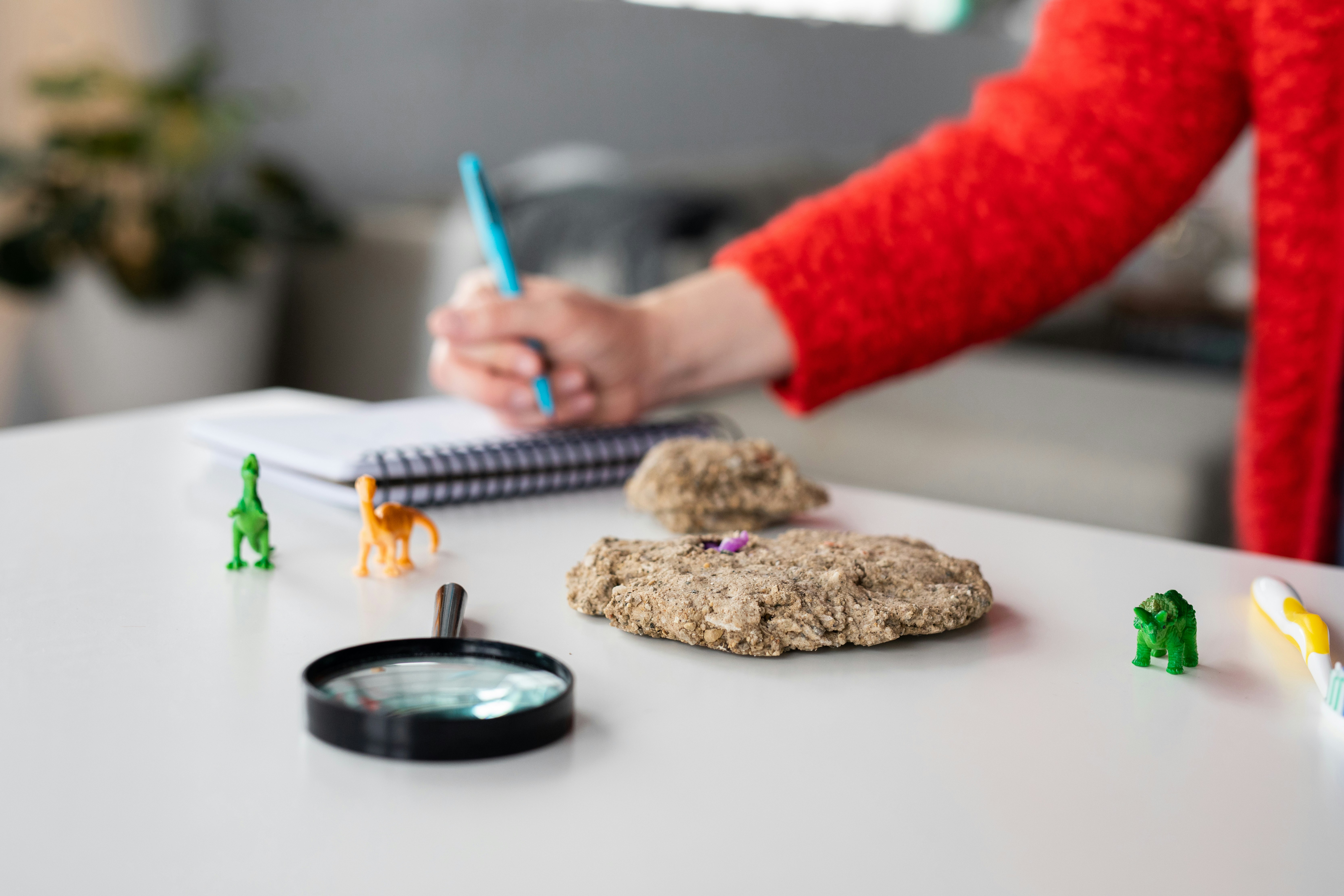
Kids can be amateur palaeontologists with this fun dino dig activity.
School Year: 4–6
Activity Time: 30–45 minutes (plus, 24–48 hours of drying time)
STEAM Subject(s): Science (Palaeontology), Art
Supplies:
- 280 g flour
- 177 ml water
- 400 g sand
- Elmer’s White School Glue
- Large bowl for mixing
- Mixing spoon
- Tiny dinosaurs, small toys, animal figurines, seashells (or sticks and stones from your backyard!)
- Amateur palaeontology tools like:
- An old toothbrush
- Cotton buds
- Paint brushes
- A magnifying glass
- Craft sticks
- Parchment paper
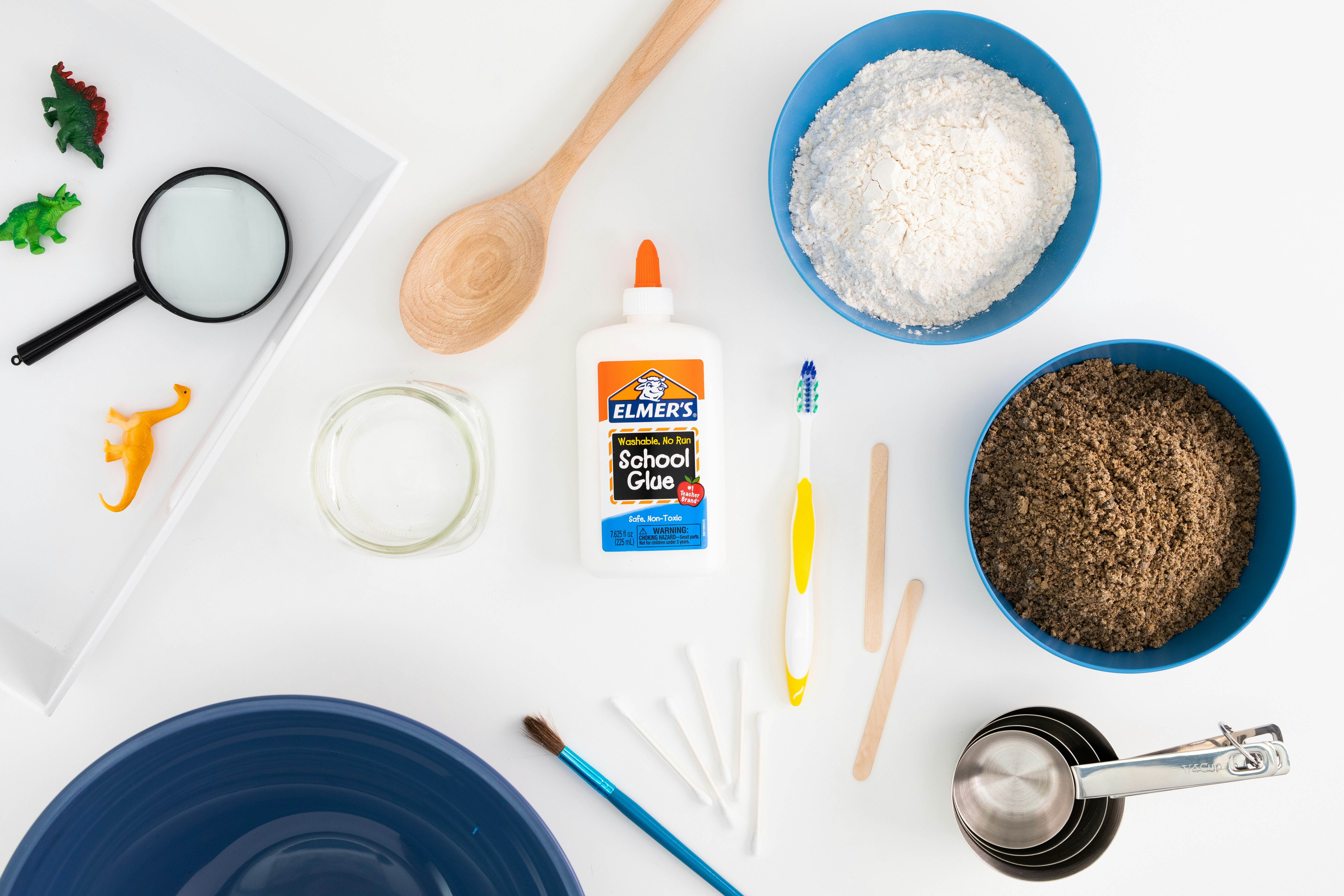
Instructions:
- Let’s start by making some “fossils”. Measure 280 g flour and 177 ml of water into the bowl. Mix with a spoon or your hands to make a sticky paste.
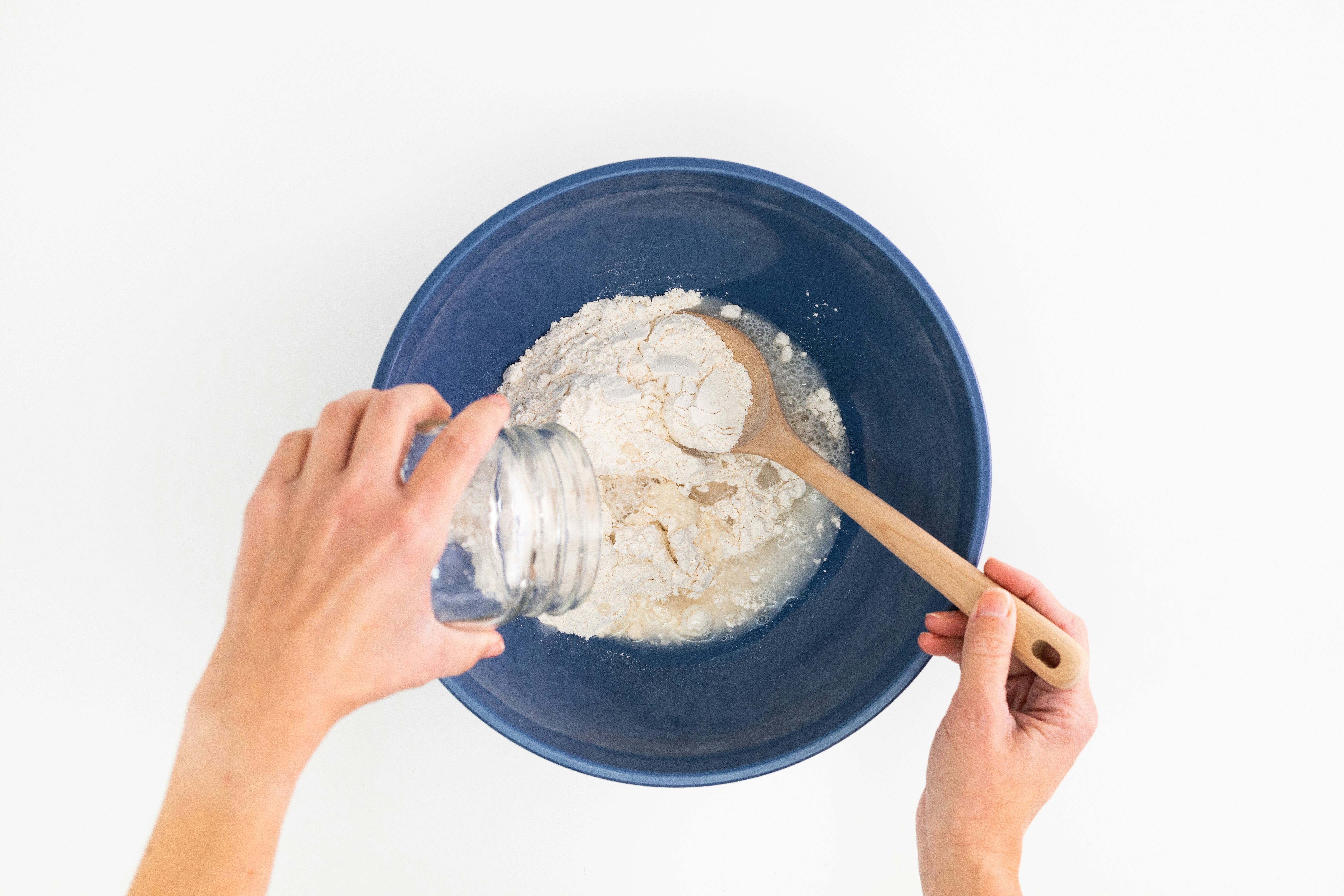
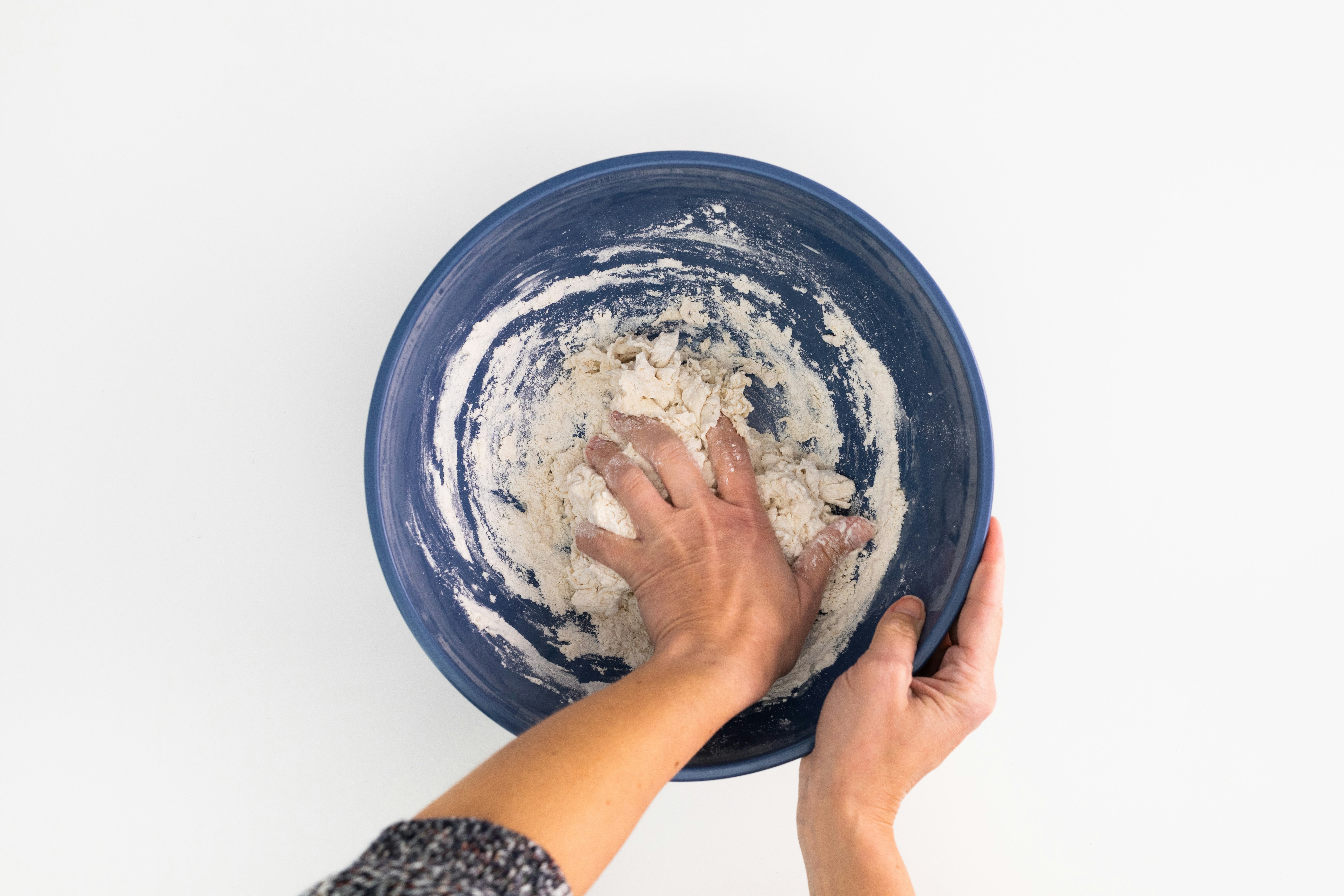
- Slowly add half of the sand into the mixture, kneading it in until it’s completely mixed.
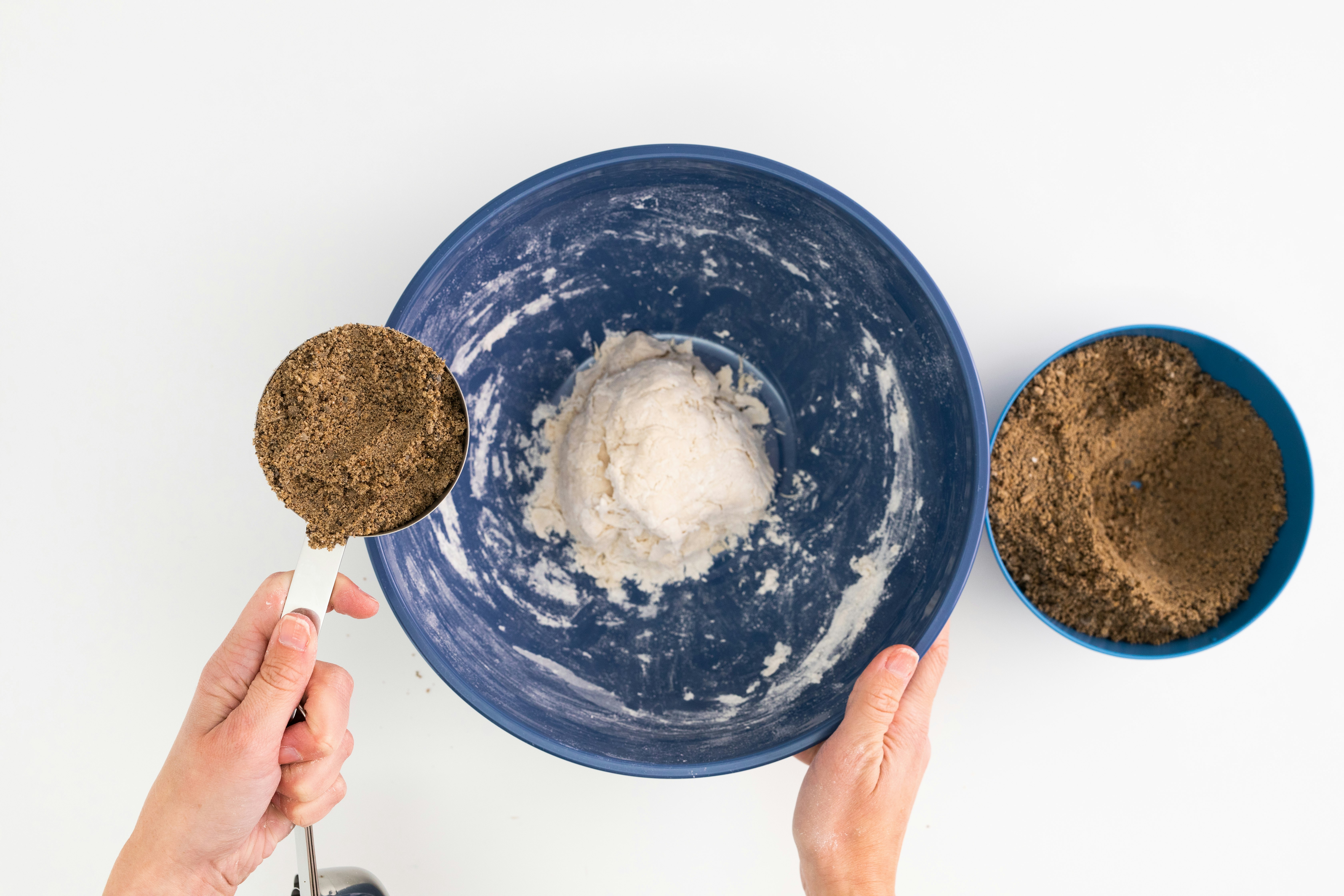
- Add 2–3 large squirts of Elmer’s White School Glue to the sand-flour-water dough. You don’t have to use exact measurements, but your blob of glue should be about the size of a 10p coin! Knead the glue into the mixture. This will make your fossils harden.
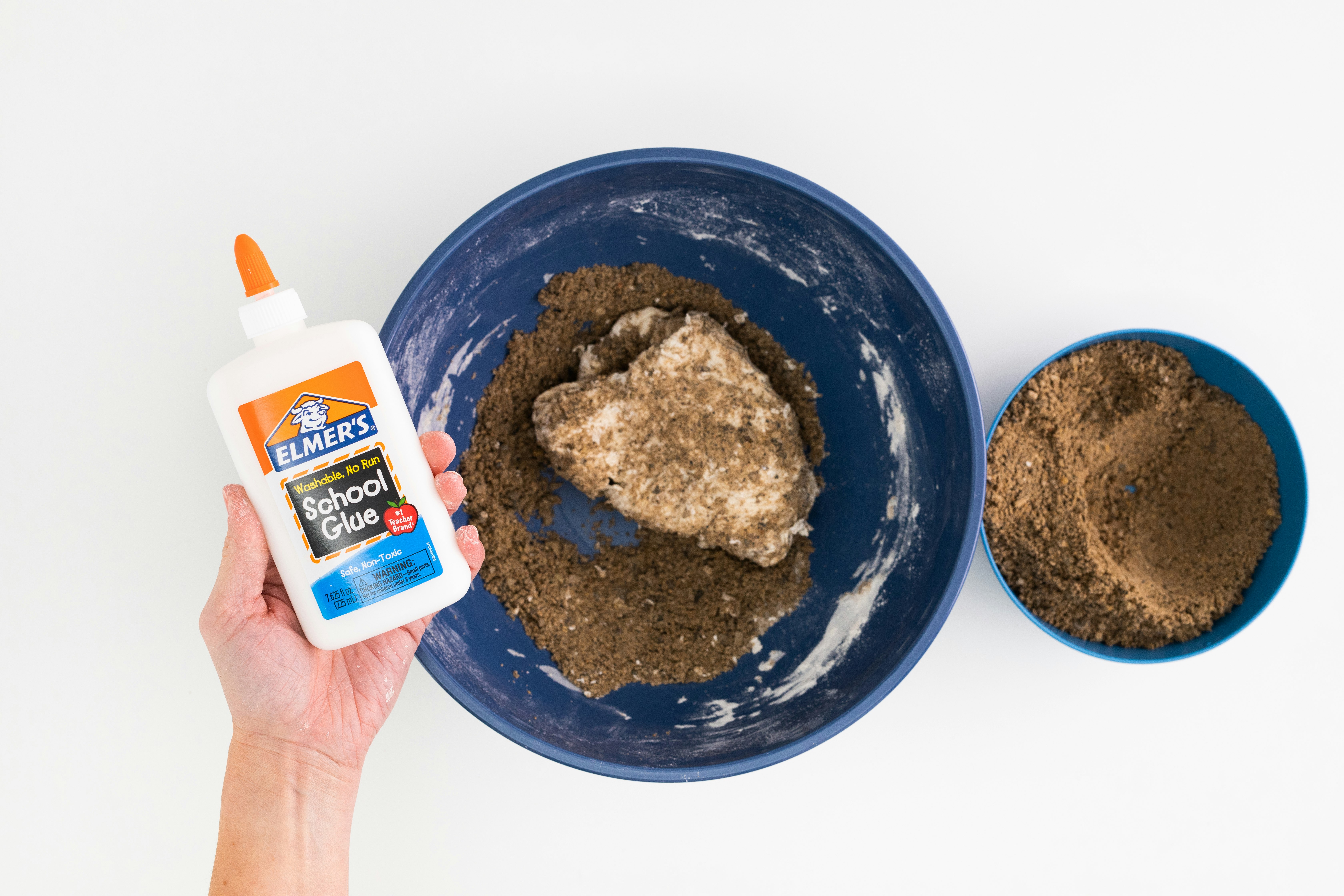
- Repeat steps two and three, adding the rest of the sand and then more glue. Your finished “fossil” dough should be wet and sticky enough to be mouldable but not so dry that the dough is falling apart. You can keep adding glue and sand to the mixture until it reaches the perfect consistency.
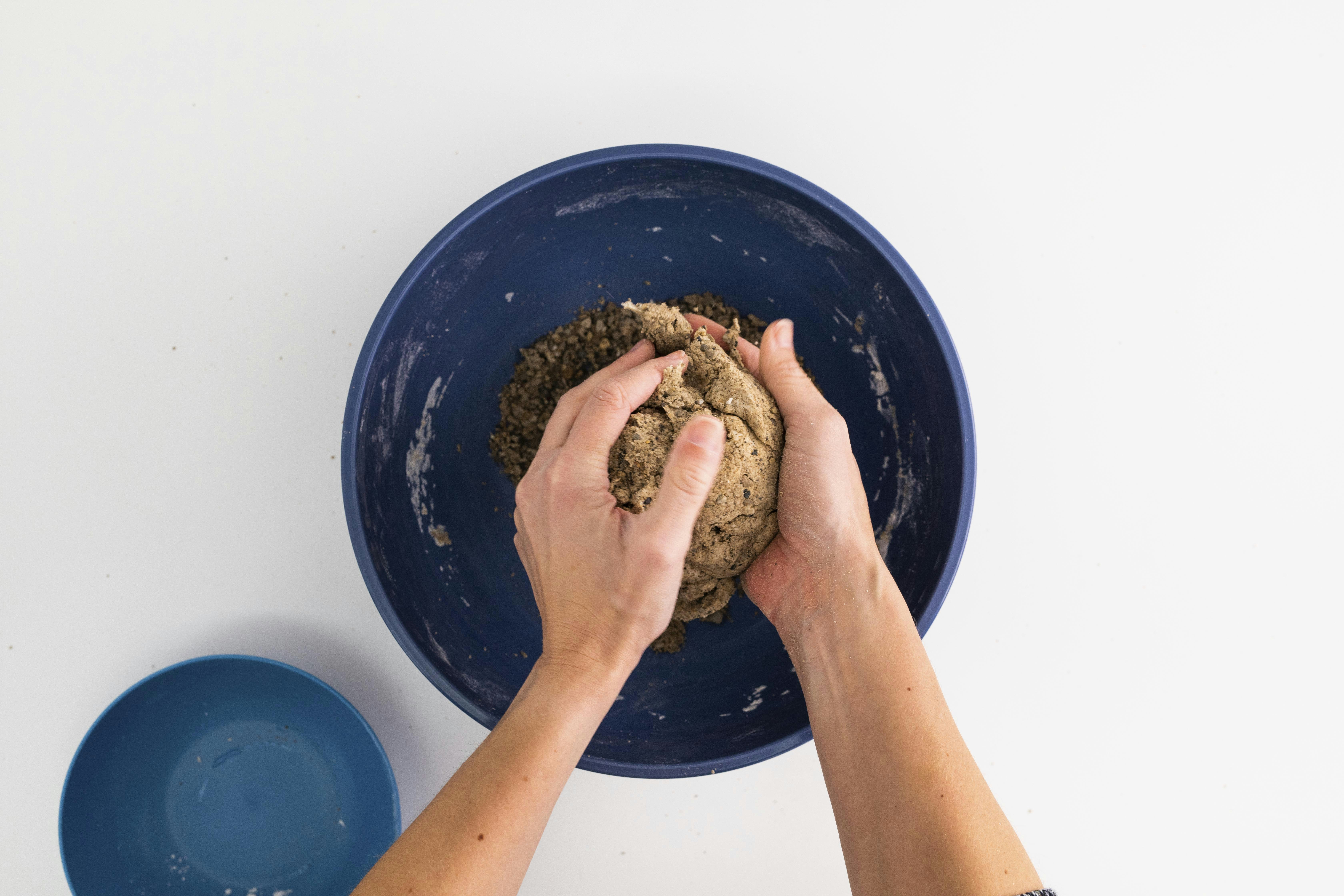
- Once you’re ready, form the dough into “fossils” about the size of an orange.
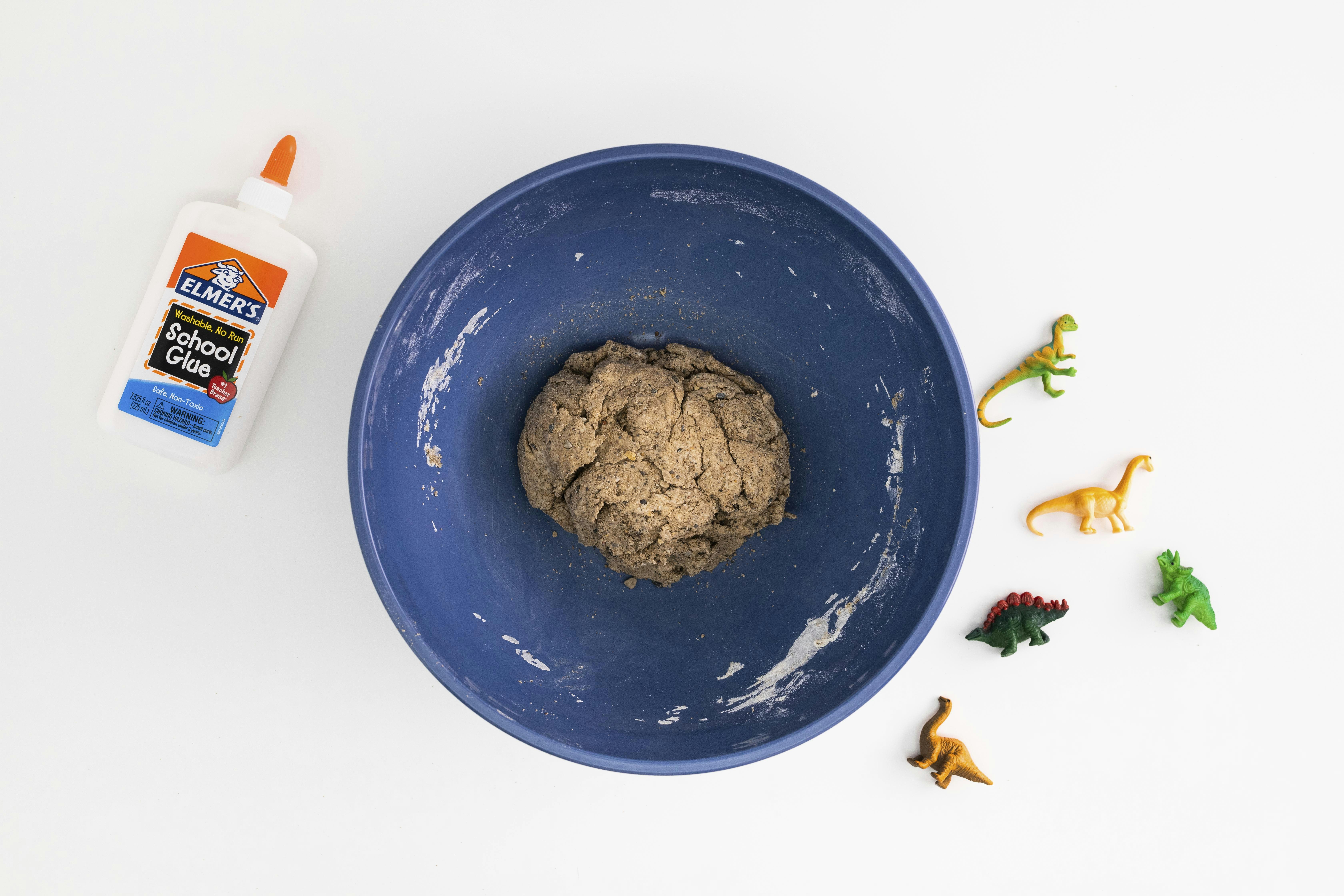
- Push dinosaur or animal figurines, small toys, seashells, rocks, or stones into the balls. Fold the dough over the objects so they are covered.
- Let the fossils sit and dry for 48 hours. (Tip: the fossils harden faster if they’re kept uncovered and stored in a dry spot.)
- Once the outside of the balls is hard and dry, let the kids chip away with their palaeontology tools and dig for fossils, just like real palaeontologists!
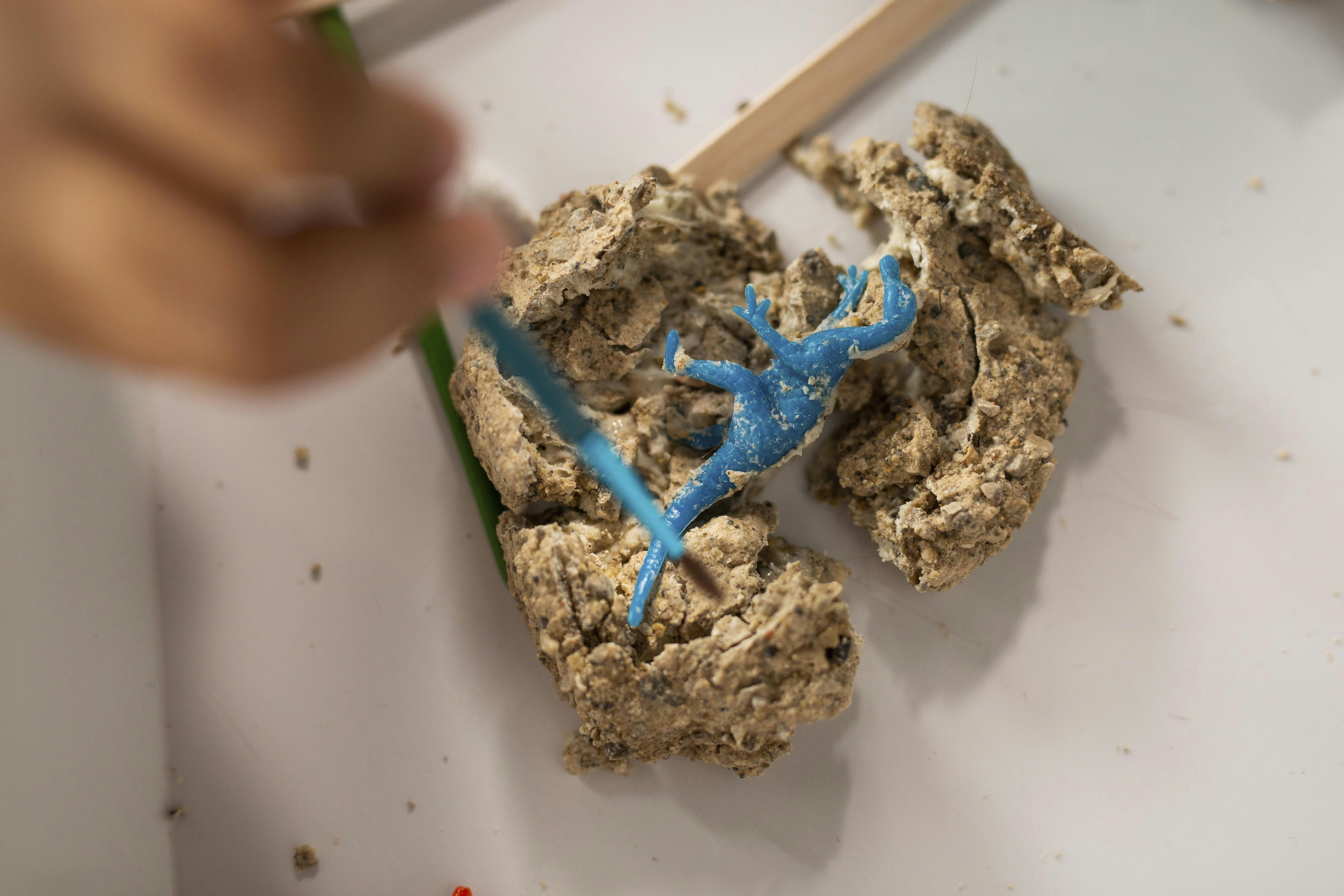
Learn More – STEAM Extensions:
- What are fossils? Fossils are traces of ancient organisms, like bones, teeth, shells, footprints, and impressions of skin or feathers that have been preserved, which we can see and study today. The “fossils” you made aren’t real fossils, but they are a fun way to get a taste of the way that real palaeontologists study the ancient world.
- What is a palaeontologist? Palaeontologists study fossils to learn about the past, but also to help us in the future. Palaeontologists often spend time excavating fossils out of rock, cliffs, and river beds... just like you did today!
- Go on a fossil hunt! Fossils are found all over the world! In fact, no matter where you live, you could probably find traces of fossils out in your environment. Ask a trusted adult to take you to a wooded area, a river or river bed, or an area near you where there are lots of rocks. Use your palaeontology skills to see if you can find some fossils. Pick up and observe rocks to see if you see patterns that look like shells, animals or leaves. Study rock ledges or cliffs to see if you can spot a fossilised layer in the rocks. Fossils are all around us, and they give us a unique and interesting look at ancient history.
Level Up – Options for Older Kids:
- The Challenges of Palaeontology. Most fossils aren’t just lying on the ground waiting for a palaeontologist to find and study them. Instead, palaeontologists have to slowly chip away at thousands of years of rock, dirt, mud, and grime to find the fossils they need to study. This is called excavation! When you excavated your dinosaurs from your fossilised rock today, it wasn’t easy, was it? You had to use your tools to really chip away at the sand and glue mixture! Palaeontologists face the challenge of having to excavate their fossils from all sorts of places, and so we challenge you to do the same. Using the same formula that you used before, see what happens if you replace the sand with kinetic sand, cornflour, large pebbles, or even dirt from your backyard. Do the different substances make it harder or easier to excavate the dinosaurs?
Standards Alignment:
Next Generation Science Standards
- 3-LS4-1: Analyse and interpret data from fossils to provide evidence of the organisms and the environments in which they lived long ago.
- 4-ESS1-1: Identify evidence from patterns in rock formations and fossils in rock layers to support an explanation for changes in a landscape over time.
3+
washableWhite
everydayCrafts